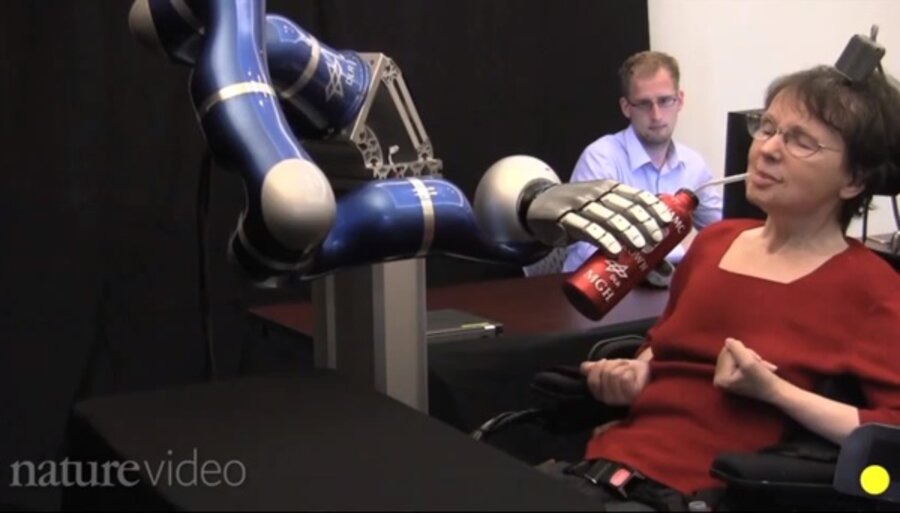Paralyzed woman masters mind-controlled robotic arm
Loading...
| Chicago
Using just her thoughts, a 58-year-old paralyzed woman instructed a robotic arm to grasp a cup of coffee and guide it to her mouth where she sipped from a straw, the first drink she has been able to serve herself in 15 years.
The woman is one of two patients in the ongoing trial of BrainGate neural interface, an experimental brain-computer interface technology that may one day give paralyzed individuals more mobility.
"This is another big jump forward to control the movements of a robotic arm in three-dimensional space," said John Donoghue, who leads the development of BrainGate technology and is the director of the Institute for Brain Science at Brown University in Rhode Island.
"We're getting closer to restoring some level of everyday function to people with limb paralysis," said Donoghue, whose study was published on Wednesday in the journal Nature.
To manage the feat, researchers used a tiny sensor about the size of a pea that is loaded with 96 electrodes designed to pick up nerve activity.
When a paralyzed patient implanted with the device thinks about moving an object, the electrodes pick up those nerve signals and send them to a nearby computer, which then translates them into commands to operate assistive devices, such as the robotic arms used in the study.
So far, the experimental device has been used to allow patients to operate a computer cursor and control simple robotic devices.
MUCH MORE TESTING NEEDED
In the trial, the woman and a 66-year-old man learned to do complex tasks with a robotic arm by imagining themselves moving their own arms and legs. The robotic arm was attached to a computer rather than their bodies.
They tested the system using two robotic arms, one developed by the German Aerospace Center's Institute of Robotics and Mechatronics and the other by DEKA Research and Development Corp, through funding from the United States Defense Advanced Research Projects Agency or DARPA.
"Our goal in this research is to develop technology that will restore independence and mobility for people with paralysis or limb loss," said Dr. Leigh Hochberg, a neuroengineer who holds appointments at the Department of Veterans Affairs, Brown University and Harvard University.
Hochberg said there was much more work to do before that could happen. The researchers need to test the technology in many more patients.
Currently, the sensor is connected to the computer through computer cables leading from the user's skull, but ultimately the team envisions a wireless system that would be fully automated and remain stable for decades. The system also needs to be refined for speed and control.
Even so, the findings are encouraging, Dr. Roderic Pettigrew, director of the National Institute of Biomedical Imaging and Bioengineering at the National Institutes of Health, which supports the research, said in a statement.
"The researchers have begun the long, difficult process of testing and refining the system with feedback from patients, and they've found that it is possible for a person to mentally control a robotic limb in three-dimensional space. This represents a remarkable advance," he said.
Follow us on Twitter @venturenaut for more tech news.







